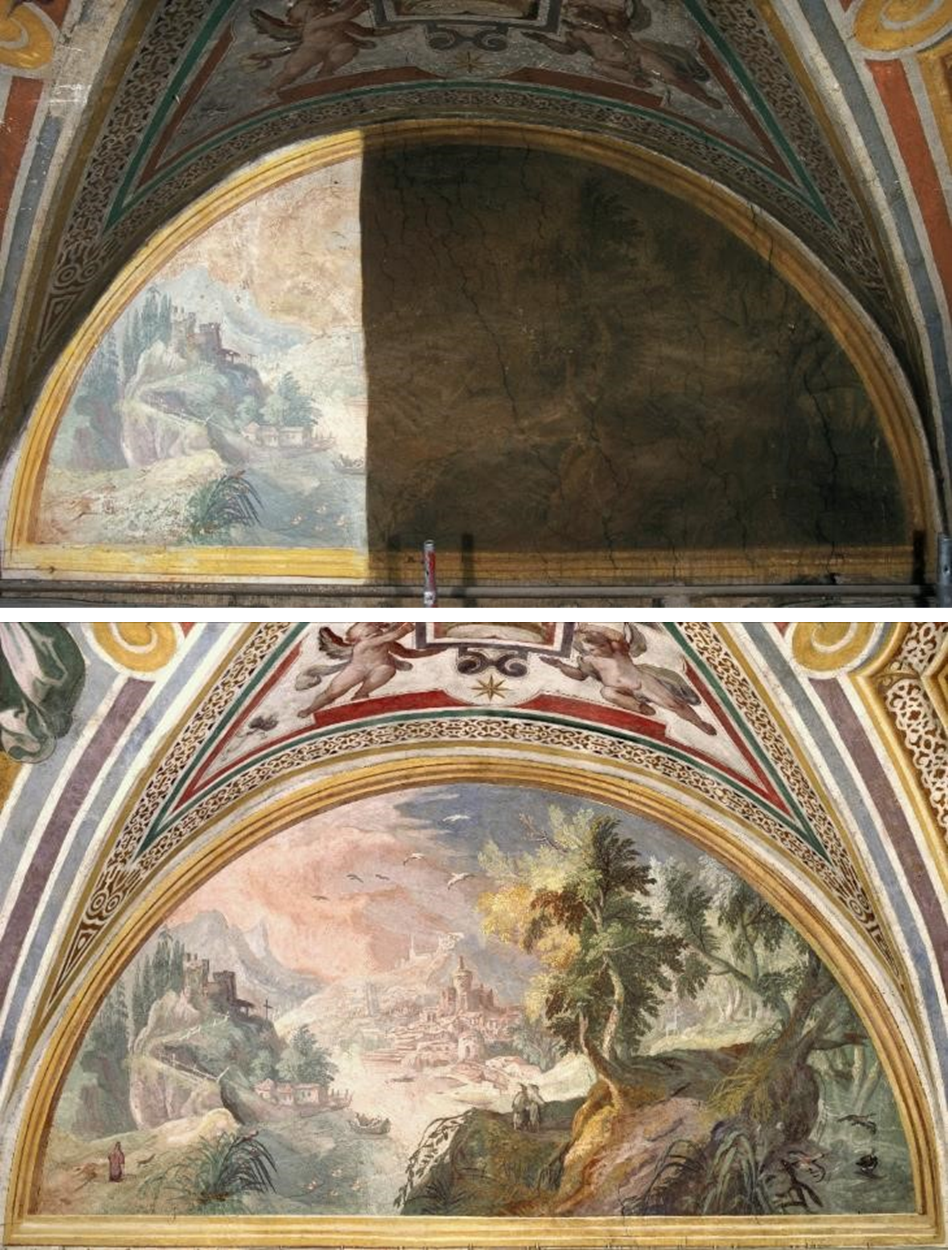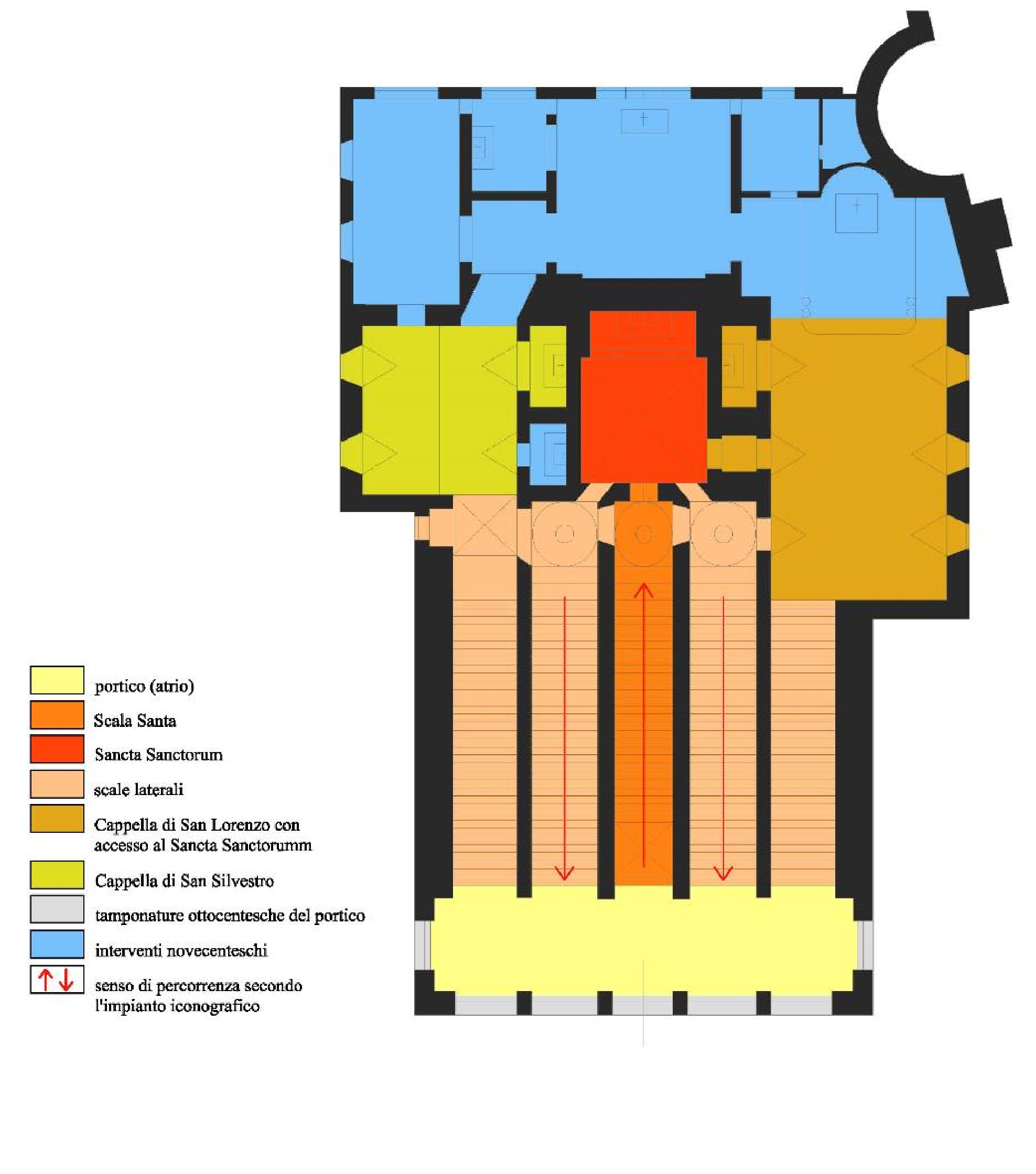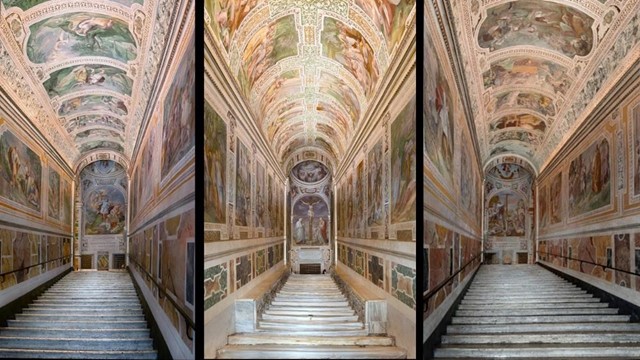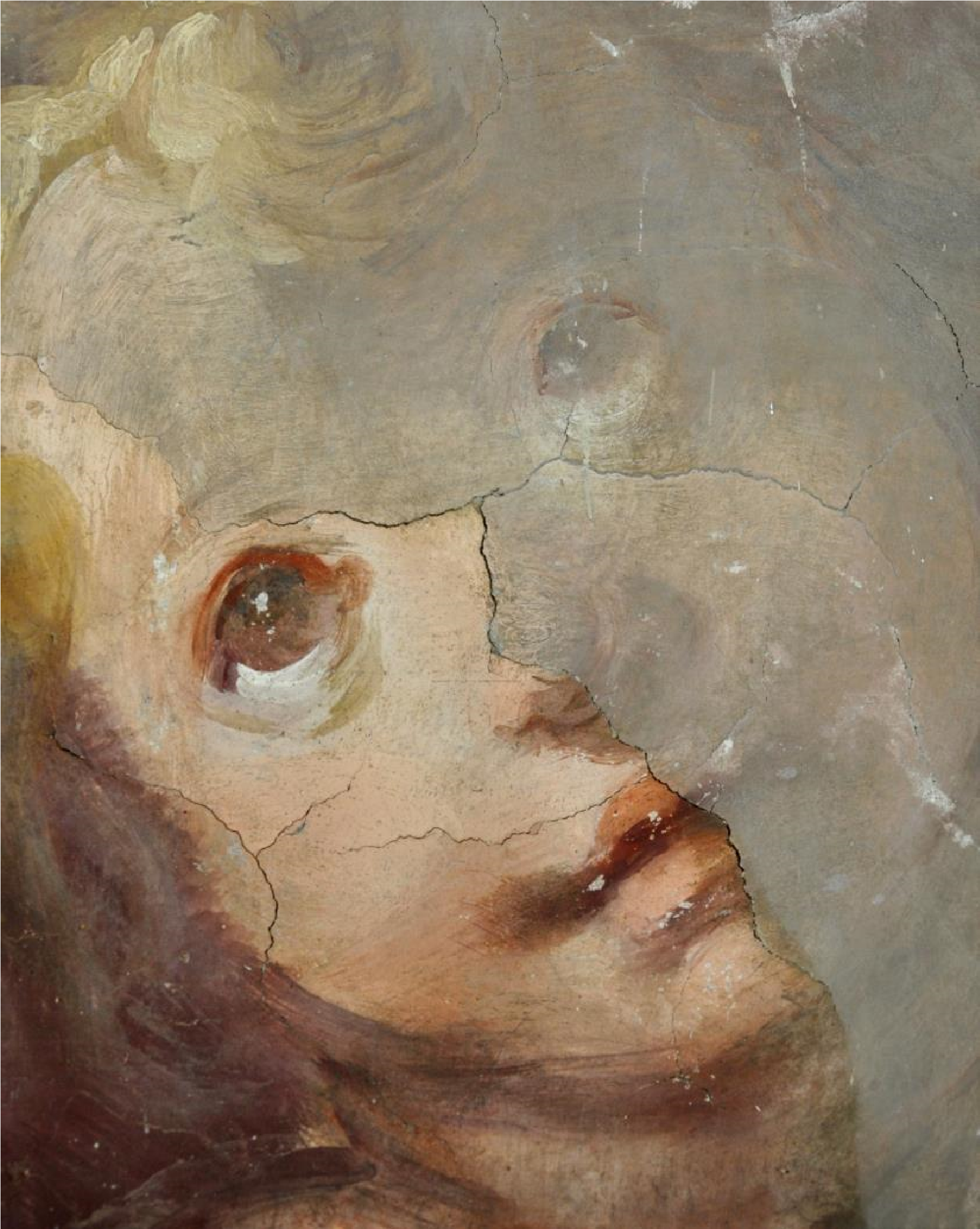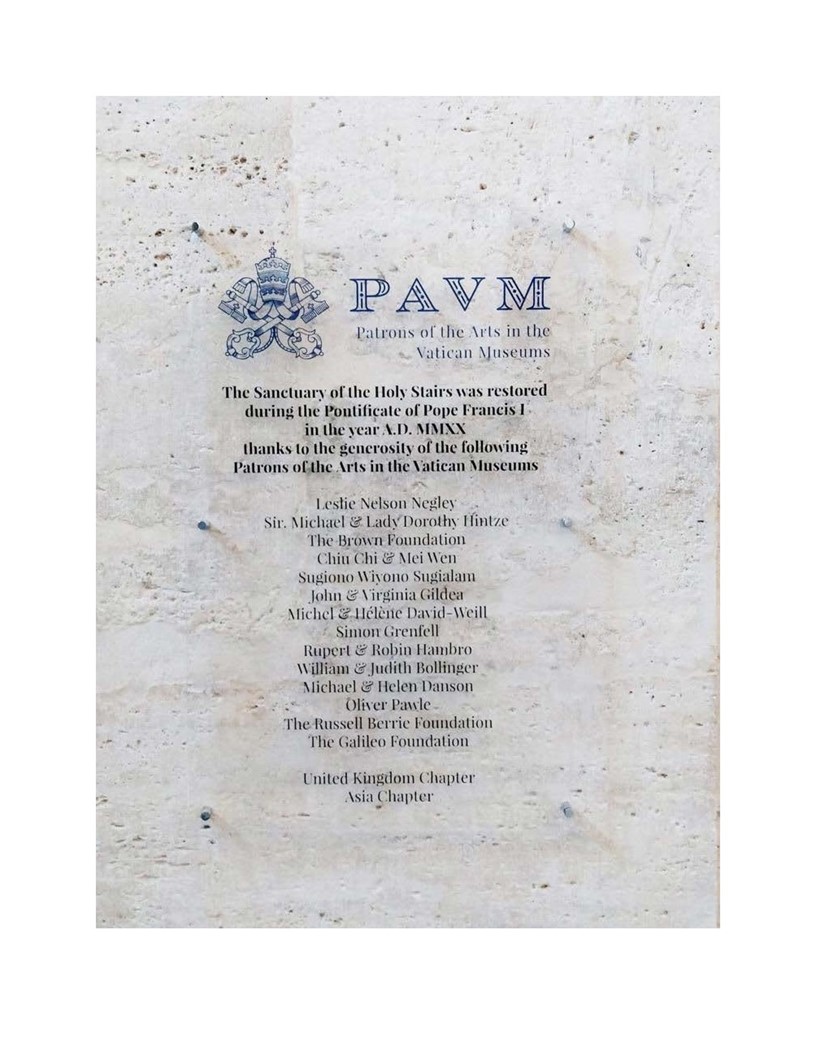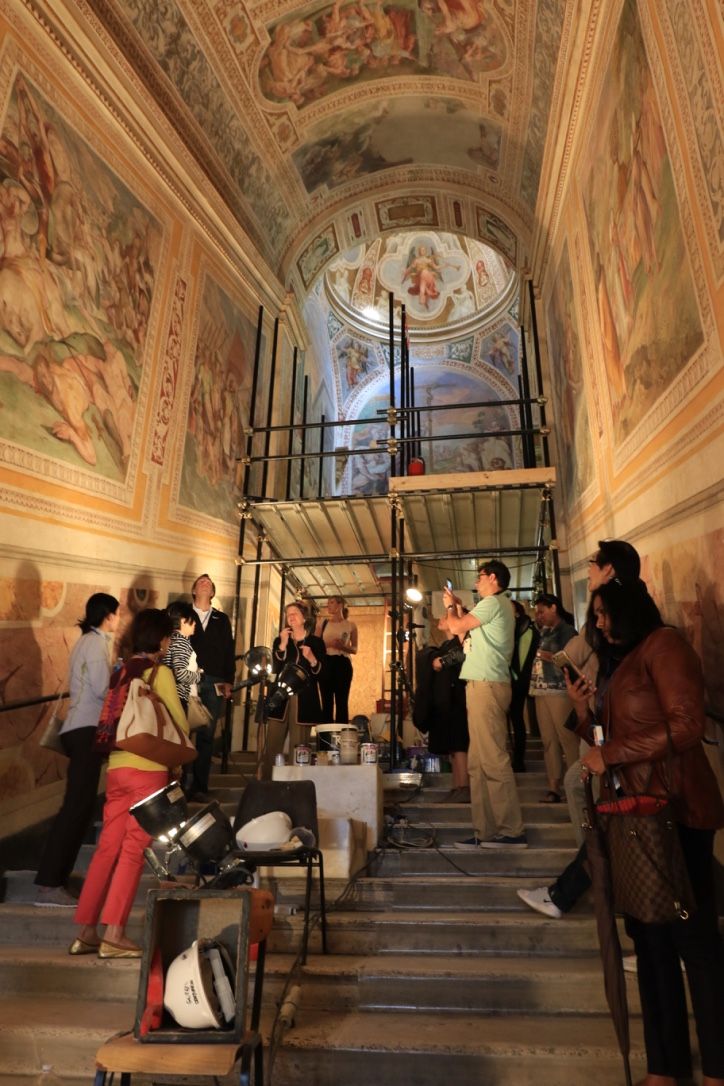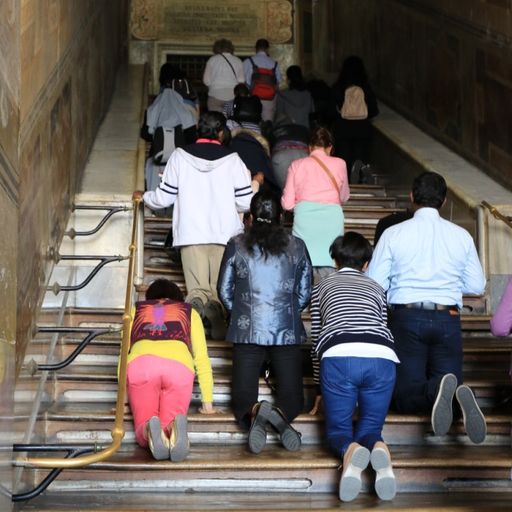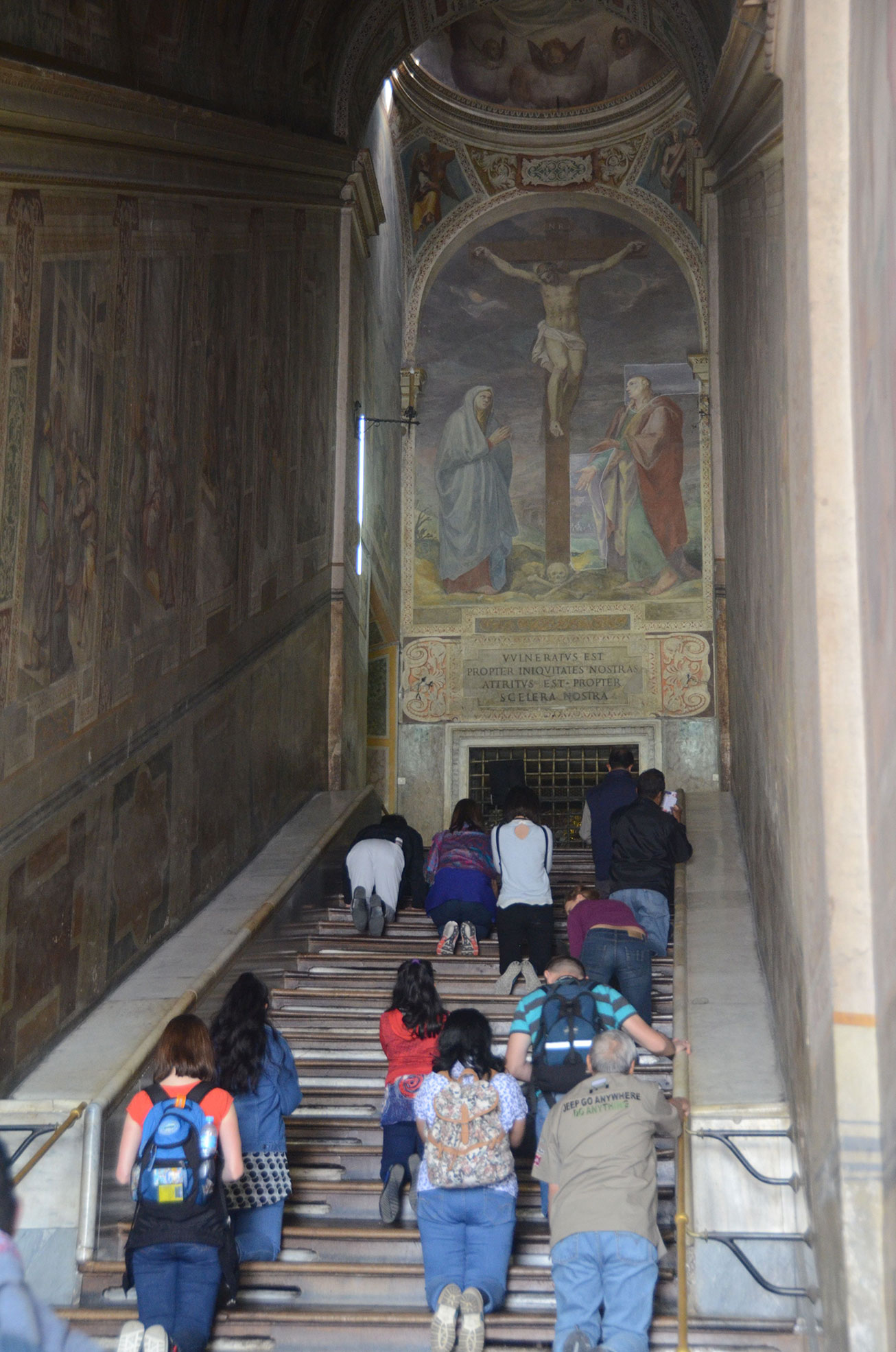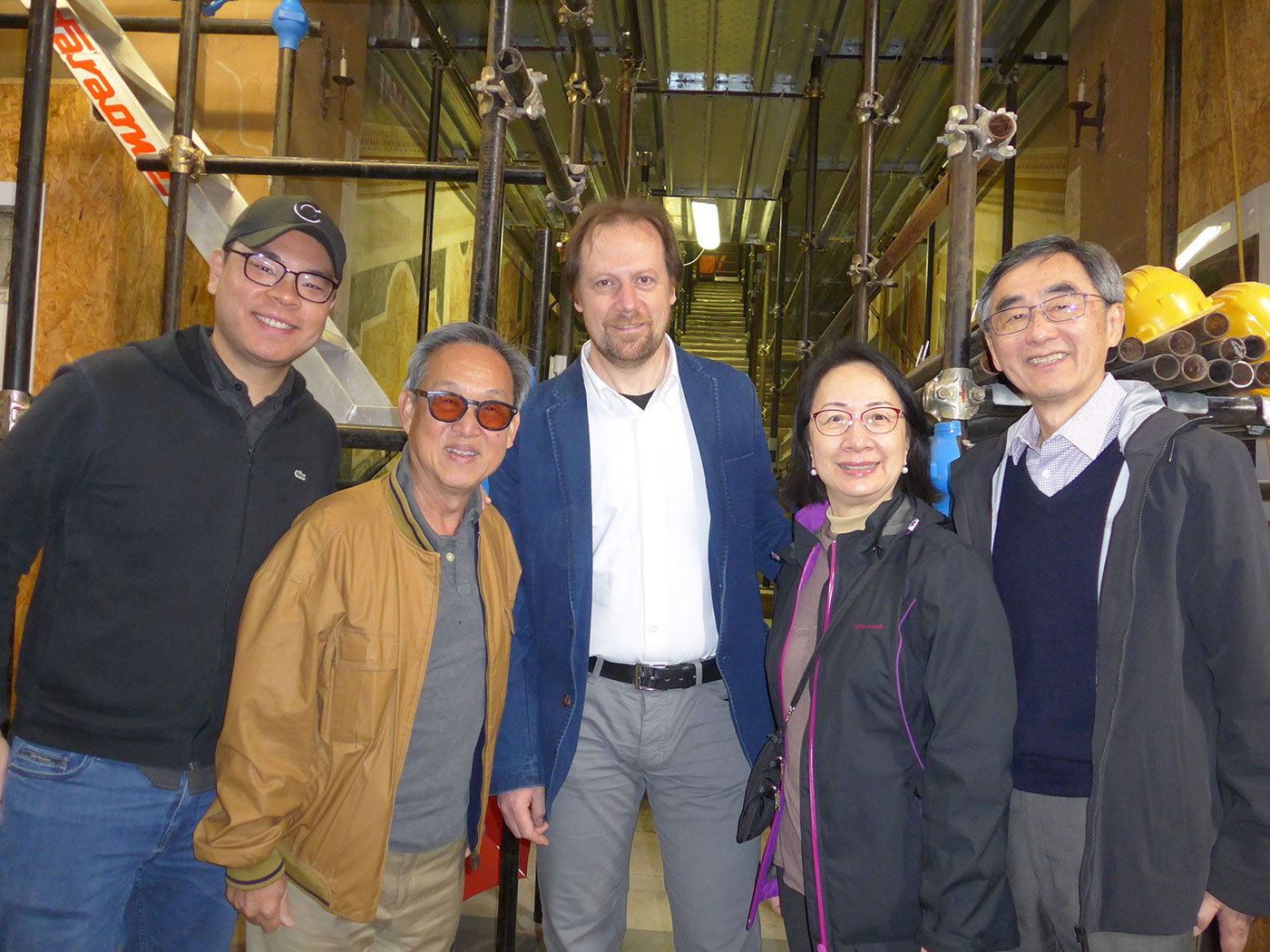The restoration report of the Scala Santa
According to an ancient tradition of St. Helena, the mother of the Roman emperor Constantine (280-337), transported from Jerusalem to Rome the staircase of Pontius Pilate’s Praetorian Palace, which Jesus Christ climbed for the Good Friday trial. This staircase permitted access from the piazza to the first floor of the ancient Patriarchium, the residence of the popes until the Middle Ages. Pope Sixtus V decided to demolish this heterogeneous complex of buildings in the Renaissance period, no longer in use, after the pontificates transferred to the Vatican. He also decided to construct a new sanctuary that includes the Holy Stairs and the Sancta Sanctorum (the private chapel of the popes), which are the only spared vestiges of the ancient papal residence. Domenico Fontana, the architect, between 1586 and 1589, placed the Holy Stairs at the center of the new architectural complex and in front of the chapel of the Sancta Sanctorum. He conveys that the Holy Stairs were disassembled and relocated in a single night and arranged from the top so the workers would not be trampled during the assignment.
The present building of the sanctuary is divided into a series of environments that create a sort of mysticaldevotional path for the use of the faithful (fig. 1). Two staircases on each side flank the Holy Stairs, and two rectangular chapels on the upper level are placed on either side of the Sancta Sanctorum. The itinerary was meant to be decorated according to a sort of Biblia pauperum for welcoming pilgrims and to allow the pilgrims to recover the stories of the Old and New Testaments in the main environments of the three central stairways. For this undertaking, the two artists Cesare Nebbia and Giovanni Guerra, already active in several Roman painting cycles, were site managers, and they coordinated about forty painters and decorators.
The recent restoration campaign of the decorations of the Sistine environments started in 2004 and concluded in March 2020. The Restoration Laboratory of Painting of the Vatican Museums executed the campaign, and the Patrons of the Arts of the Vatican Museums financed it. The restorers solved numerous conservation issues and resolved the correct legibility of the frescos. This work made it possible to understand the complex organization of the Sistine construction and to formulate new attributional hypotheses for the frescoes. The restorers identified the personalities of such well-known painters as Giovanni Baglione, Paul Bril, Baldasarre Croce, Giovanni, and Cherubino Alberti, Ferraù Fenzoni, Andrea Lilio, Prospero Orsi, and Giovan Battista Ricci, as well as many others.
The restoration brought to light many pieces of sixteenth-century painting and decoration concealed by subsequent and improper restoration and maintenance work to fully restore a coherent and homogenous reading of the entire cycle that rediscovered the correct relationship between figure scenes and decorative apparatus (figs. 3-6). Thus, the art-historical value of this great undertaking by Nebbia and Guerra is the last and extreme chapter of late Roman Mannerism. Some passages already hint at elements heralding the advent of the radical changes that the painters of the new century would soon introduce, which the restorers fully recovered.
Paolo Violini

